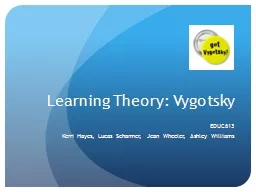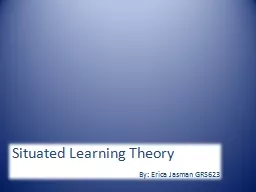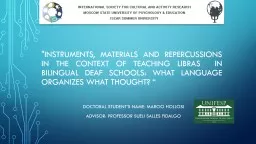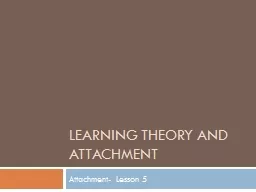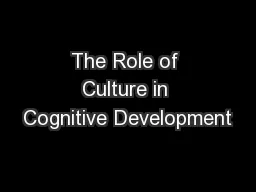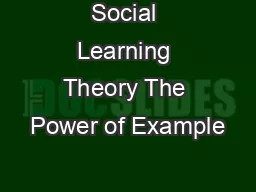PPT-Learning Theory: Vygotsky
Author : luanne-stotts | Published Date : 2018-10-28
EDUC613 Kerri Hayes Lucas Scharmer Jean Wheeler Ashley Williams Lev Vygotsky 18961934 He was a Russian psychologist who was born November 17 1896 He attended
Presentation Embed Code
Download Presentation
Download Presentation The PPT/PDF document "Learning Theory: Vygotsky" is the property of its rightful owner. Permission is granted to download and print the materials on this website for personal, non-commercial use only, and to display it on your personal computer provided you do not modify the materials and that you retain all copyright notices contained in the materials. By downloading content from our website, you accept the terms of this agreement.
Learning Theory: Vygotsky: Transcript
Download Rules Of Document
"Learning Theory: Vygotsky"The content belongs to its owner. You may download and print it for personal use, without modification, and keep all copyright notices. By downloading, you agree to these terms.
Related Documents

